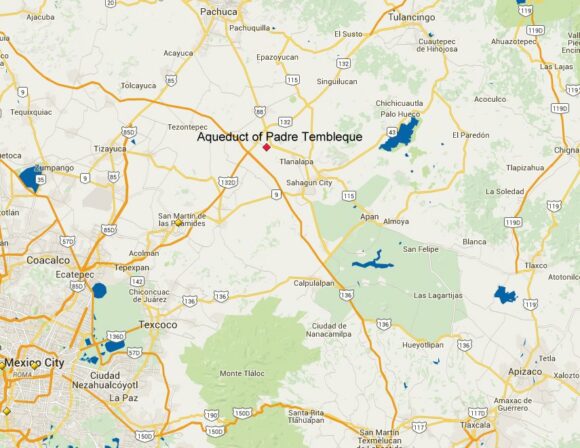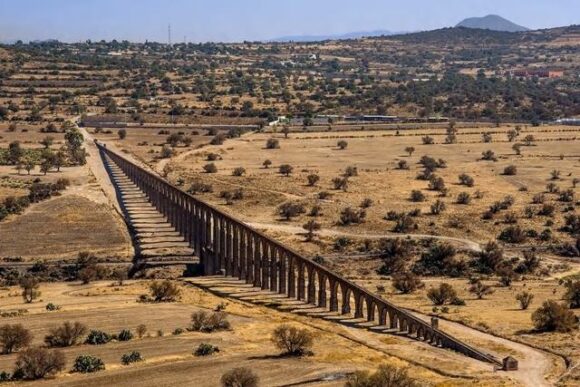Earlier this year, UNESCO added a 16th century aqueduct in Mexico to its list of world heritage sites, bringing the total number of such sites in Mexico to 33.
The Aqueduct of Padre Tembleque was constructed between 1554 and 1571. It is named for the Franciscan friar, Francisco de Tembleque, who began the 48-kilometer-long aqueduct, which was built to transport water from what is now Zempoala, Hidalgo, to Otumba in the State of México. The aqueduct connects to an engineered water catchment area, springs, canals and distribution tanks.
The aqueduct was built with support from the local indigenous communities: “This hydraulic system is an example of the exchange of influences between the European tradition of Roman hydraulics and traditional Mesoamerican construction techniques, including the use of adobe.” (UNESCO)
While much of the aqueduct is at ground level or underground, it crosses over the Papalote River near Santiago Tepeyahualco supported by a graceful series of high arches called the Main Arcade, 67 arches in total, and at one point 39 meters above the river (the highest single-level arcade ever built in an aqueduct “from Roman times until the middle of the 16th century.”)
The Aqueduct of Padre Tembleque is the largest single hydraulic engineering project completed in the Americas during Spanish colonial times and is a worthy addition to the World Heritage list.
For more information:
Related posts
- Mexico has more World Heritage sites than any other country in the Americas (Mar 2012)
- Mexico’s El Pinacate and Gran Desierto de Altar Biosphere Reserve in Sonora gets UNESCO World Heritage status (2014)


Sorry, the comment form is closed at this time.